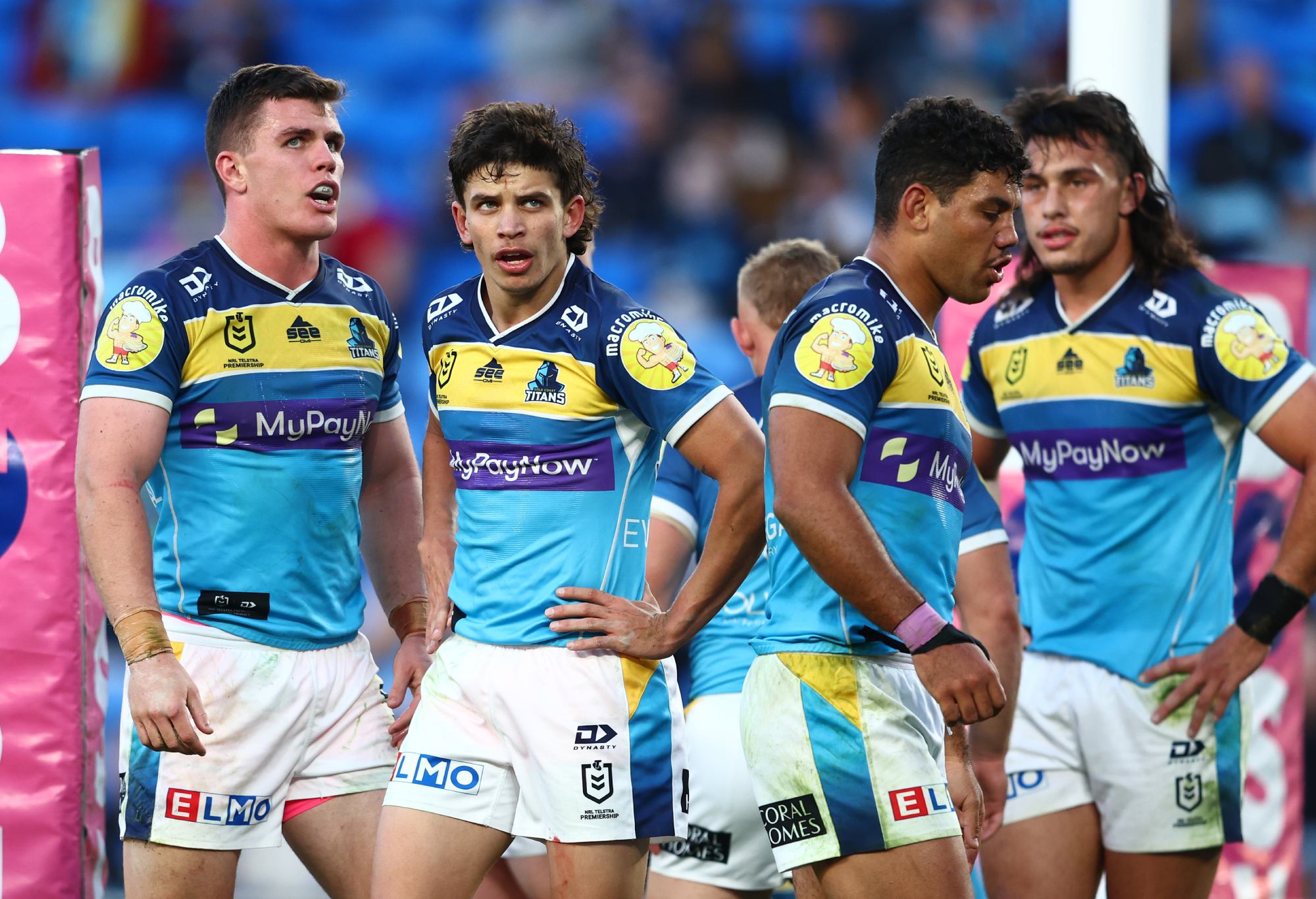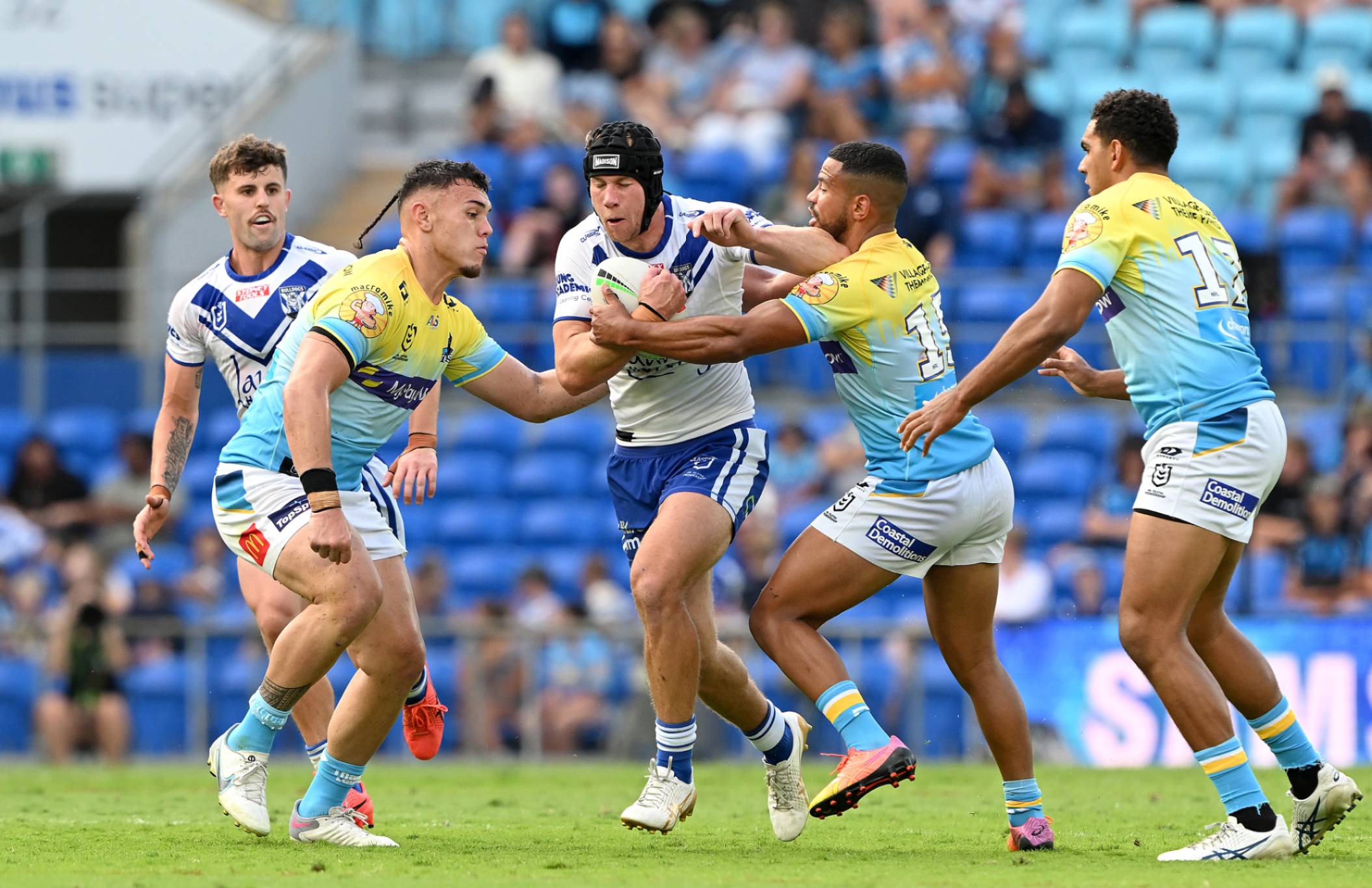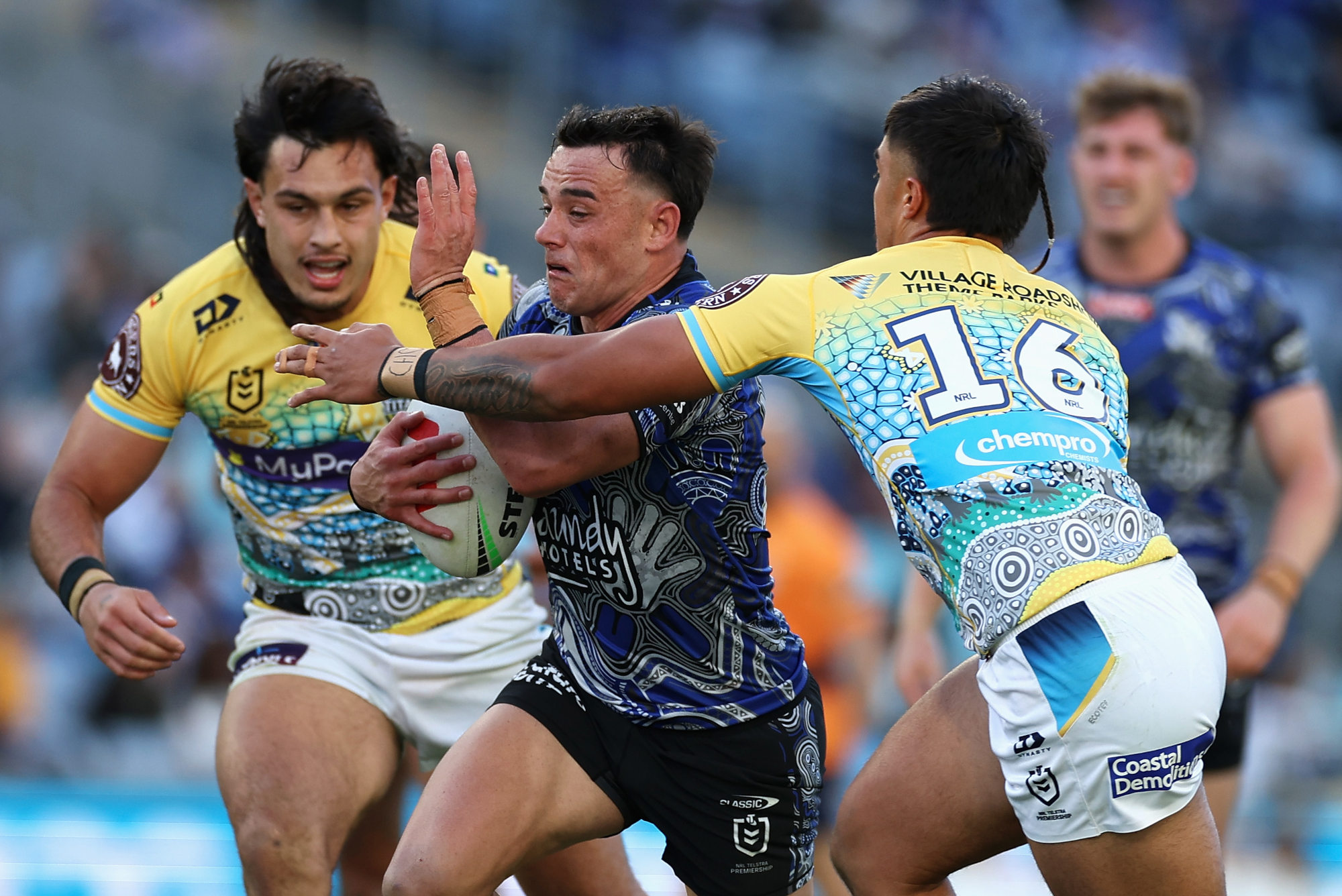From the middle of last year, when the Gold Coast Titans sacked Justin Holbrook and announced the arrival of Des Hasler, the task has been clear: improve the defence.
Across the nearly two decades of the Titans’ existence, the issues have generally come without the ball, and it remains a circle that nobody can square.
Are they all soft on the Gold Coast, coddled by nice weather and a lack of pressure? Is it the place where careers go to wind down rather than ramp up? Are all sports franchises doomed to fail from the minute they set up shop on the GIitter Strip?
If there’s one man who can get to the heart of it, then Des Hasler is he.
He’s built an entire footy career on work ethic and standards, is empowered by the club to clean house and will come in knowing that he has nothing to lose.
Nobody expected him to take the job, he doesn’t need it and if he fails, then it likely won’t be seen as his fault.
Compare and contrast to his previous two roles. At Manly, he was a club legend who was tasked with rebuilding after a year in which, horror of horrors, they nearly finished last. It had to get better, and quickly.
At the Dogs, it was less drastic, but still a team that many thought could win the comp but which ended up missing the finals.
It’s these two stories that can provide a blueprint for what Dessie might do on the Gold Coast, because this is not his first rodeo when it comes to patching up a side with a shocking record off the ball.
Hasler took a Canterbury side that had conceded 20.4 points per game in 2011 – remember, this was a much more defensive era of rugby league – and finished ninth turned them into one that conceded 15.4 in 2012 and finished first.
When he returned to Manly, they had been going at 25.9 points against in 2018 under Trent Barrett, and in 2019, conceded 19.4 on average.
It’s a small sample size, of course, but that suggests that the first Hasler season is worth exactly five points per game fewer than the year before he arrived.

Jayden Campbell. (Photo by Chris Hyde/Getty Images)
In that sense, the Titans are his biggest challenge yet. They went at a massive 27.2 conceded in 2023 – albeit in a generally more high-scoring era – which was the fourth worst in the comp.
If they were to replicate the five point improvement, it would skyrocket the Gold Coast from 14th in defence to ninth in last year’s ladder.
The Titans were 13th in differential, one higher to the anomaly of all anomalies, the 2023 Raiders, and if they kept their attack constant while improving their defence, they would be good for almost breaking even on points difference.
That’s the headline stats, but we don’t really buy into that. We go deeper, pulling out the individual years and trying to ascertain what it was that actually improved week to week to manifest in a better defence.
It’s a bit complicated in 2011, as stats were kept differently back then with far less depth, but is a lot easier in 2018 and 2019 at Manly, when we can really see what Hasler’s effect was compared to the previous regime.
The headline we can take from both comparison years is that Hasler had a big effect on tackling, both in terms of organisation and, perhaps more importantly, on how much of it both the Dogs and Sea Eagles had to do.
In 2012, for example, the Bulldogs were asked to make 7% fewer tackles than they were in 2011, almost four set’s worth per game. That’s an awful lot of work across a whole year that a fatigued defence doesn’t have to do.
In 2019, Manly made roughly the same amount of tackles as the year before, but they held the ball far, far better.
Their completion rate was almost the same, too, but we know that’s a nonsense: what changed was how Manly attacked.
They threw more passes and more offloads, but also made more one-out runs and their pass per run ratio (PPR) went down.
They massively increased the number of sets that included a kick, so even though they completed their sets at the same rate, they ended them on their own terms more often and, perhaps most tellingly, their metres per run (MPR) went down but their metres per set (MPS) went up – resulting, of course, in more metres total.
Throw all those changes together and you have a side that is playing more conservatively early in the set in yardage but more expansively later on, asking more questions of defences and tiring the opposition out.
That’s a lot of numbers to tell you that a Des Hasler team is better to watch than a Trent Barrett team, but it speaks to how cyclical rugby league is. If you’re easy to defend, you’re often punished for it when the ball switches over.
This bodes well for the Titans. They were 2% above the league average for completion rate but well below it for total sets, suggesting that they would gain a lot from playing faster and more expansively with a little more risk thrown in.
They were the opposite of 2019 Manly, with a poor hit-up percentage, a good MPR and a bad MPS, with the knock on effect of poor overall yardage.
If you have better MPS, it inevitably influences where the game is played, moving further from your own line. That in turn decreases the chances of poor defensive work manifesting into points against, because you have more space behind to play with.

Matt Burton. (Photo by Bradley Kanaris/Getty Images)
Being better with the ball also decreases your own fatigue, which reduces how likely you are to make errors and you know the rest.
Friend of the column Rugby League Eye Test picked this up midyear in analysing why the Titans so continually threw away leads in the second half, with location based stats that backed up the idea that far too much of the game was taking place in their own half.
It does somewhat state the obvious to say that the best way to improve your defence is to do less of it, but in the Titans’ case, it’s absolutely true.
When it comes to the tackling they have to do, there is also hope in Hasler’s arrival.
The effective tackle percentage (ET%) barely moves in either of his first years – though a 1% improvement at the Dogs is not nothing – there is a very interesting trend hidden in the data.
In both instances, the number of missed tackles drops by around 15% between the non-Hasler year and Dessie’s first, but the ET% stays about the same. How is that possible?
We don’t have data for 2011, but in 2019, we can see the number of full misses fall but the number of ineffective tackles jump.
That means that, even when a player didn’t effect the completed tackle, they were at least in the way and slowing an opponent down, with the net result of fewer breaks and points.
The golden rule of defence, at least for this undersized halfback, was that if you couldn’t make the tackle, at least be a speedbump.
It also speaks of a greater ability to get in front of opponents in the first place.
Missed tackles (MT) are up there with completion rates as far as poor stats are concerned, because nobody gets credited with a miss for a tackle that they’re not there to make, but ineffective tackles are when you get in there, but failed to stop the ball.

SYDNEY, AUSTRALIA – MAY 21: Kurtis Morrin of the Bulldogs is tackled during the round 12 NRL match between Canterbury Bulldogs and Gold Coast Titans at Accor Stadium on May 21, 2023 in Sydney, Australia. (Photo by Cameron Spencer/Getty Images)
That, obviously, much better than missing entirely or not being there. The Titans have never been overly bad in the MT category – at least, not as bad as you might expect from a team that bad at defending – because they were so frequently torn apart.
Tanah Boyd, for example, was worth two line breaks against per game while Jojo Fifita fared even worse out wide as he was continually passed around.
When they got there, their ET% was about the average for someone in their position, but they got there far less than their peers. It was organisation, not execution.
No doubt defence will have been top of the agenda for Hasler when pre-season started, and it will hearten Titans fans to see that he was so quickly able to get results from his system on the previous two occasions when he has taken over failing sides.
The Gold Coast will be the biggest ask yet, given the years of underperformance and endemic defensive issues across multiple clubs.
Yet it is not unsolvable. The conditions are there to make big improvements, and there’s few you’d rather have in place to bring them about than Dessie.































































































